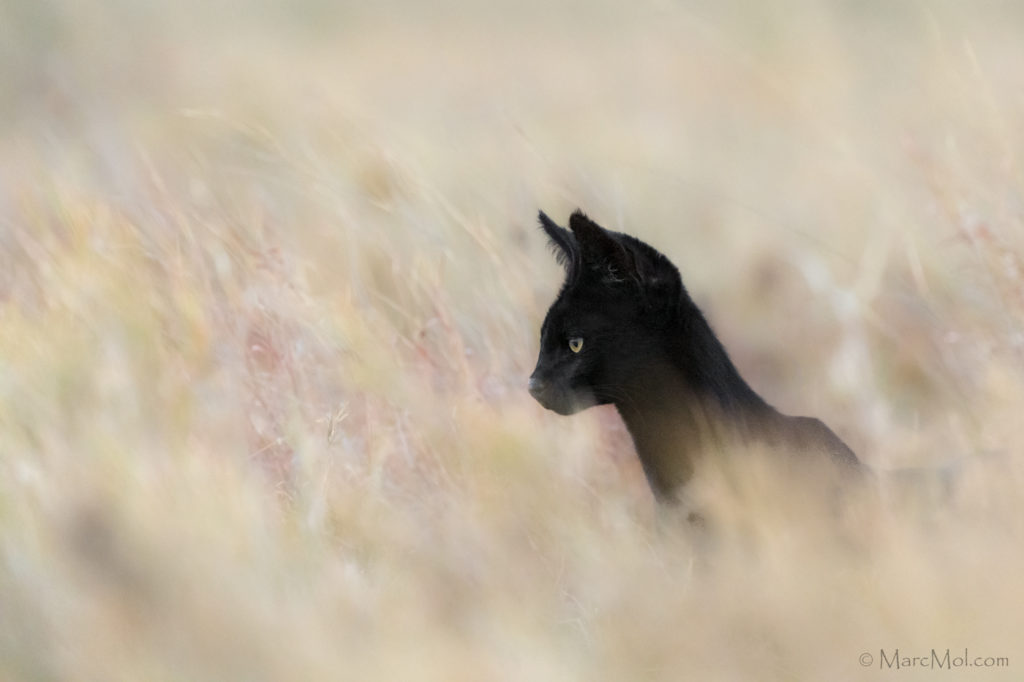
Manja, The Rare Melanistic Serval Cat Roams The Serengeti In Tanzania
Melanism affects at least 13 of the 37 known feline species worldwide, with Black panthers being perhaps the most famous of the melanistic cats. Panthers are not a separate species, but this is rather an umbrella term used to categorize dark-coated leopards in Africa and Asia, and jaguars in South America.
Manja’s dark coat is due to its melanistic condition, which results in the serval’s usually golden, brown spotted coat to become completely black. This primarily happens in East Africa, in the highland regions, 2,000 m above sea level. Scientists have termed this phenomenon as ‘thermal melanism hypothesis’, which states that animals who live in higher altitudes — and therefore experience colder temperatures — are more likely to become melanistic. Their dark pigmentation would aid them to absorb more solar radiation, warm up more quickly, and maintain their activity levels. Also, this theory suggests that darker coloration can serve as an adaptive or functional advantage at high altitudes, as this increases protection against the sun’s UV rays.
Manja’s dark coat is due to its melanistic condition, which results in the serval’s usually golden, brown spotted coat to become completely black. This primarily happens in East Africa, in the highland regions, 2,000 m above sea level. Scientists have termed this phenomenon as ‘thermal melanism hypothesis’, which states that animals who live in higher altitudes — and therefore experience colder temperatures — are more likely to become melanistic. Their dark pigmentation would aid them to absorb more solar radiation, warm up more quickly, and maintain their activity levels. Also, this theory suggests that darker coloration can serve as an adaptive or functional advantage at high altitudes, as this increases protection against the sun’s UV rays.
Advertisements
20 August 2023
Advertisements



